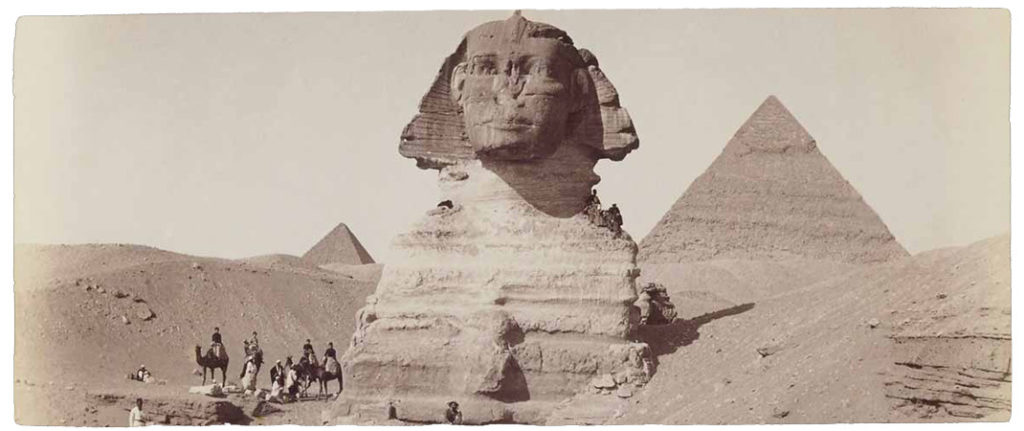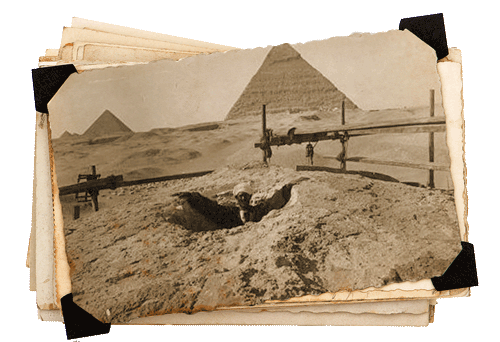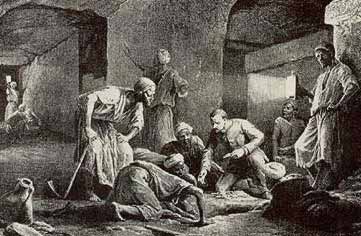The Curse of the Sphinx
1925
Luc Barré, passionate archaeologist and historian, and member of ACE since 1920, set off in 1925 to uncover the Sphinx of Giza.
His diary is preserved only in fragments. We reconstructed the rest with the help of archaeologists and historians.
![]()
23rd October 1925
“The sphinx kneels in front of me, buried to the neck in sand. I feel a mixture of awe and pride. With every fall of my shovel I uncover yet another piece of history that will help the world understand the secrets of this beautiful… Actually, what are you? A tomb? A statue? A wall? We’ll soon see.” After a short number of weeks the mood in the camp had shifted dramatically. The workers grew distant, as Luc noted in his diary. From eyewitness reports at the time we know that Barré himself became increasingly tense, eating and sleeping little.
3rd January 1926
“Can one call it ‘mutiny’? My workers have begun to drop off, their numbers decreasing steadily. Initially I had thought a virus may be spreading. Later I would put it down to exhaustion due to strenuous hours and demanding targets. Yesterday I assumed a storm to be the reason for my missing workers.
“Today, however, I happened upon the man who sharpens my tools and he has confirmed for me that a fever has indeed gripped my men. Not, however, one that can be cured by any doctor. The men have stayed away, he would have me believe, because of a bad feeling growing within their ranks. They hook and dig and as they do they fear the revenge of the dead below. Some had, suddenly caught as if by a menacing spirit, began convulsing and stammering words of warning. I simply cannot believe this.”
Schedules for the expedition continued to shift and Barré began to seem more and more ill fated in his efforts. His diary entries from this point become steadily more erratic, cryptic and mysterious.
The third Sunday in May 1926
“I got a new pickaxe. This is the third one in four weeks!! I wonder whether it is my gear that is of poor quality or if that damn cat is cursed. She stares at me and mocks me. MEOW! I wish I had a huge ball of wool with which to tame her.”
After this entry some pages have been unambiguously torn out. Unfortunately, no reliable photographic evidence of the excavation between 1926 and 1929 any longer exist.
1929, Summer
“It’s over. Cement from Cairo has finally arrived to put an end to my daring endeavours. Not a day longer did I care to see this hole uncovered. Had the messenger not arrived I would have driven to Cairo and filled it myself. The hole is no more. Never again should anyone have to see what I have witnessed. Let us put this behind us and go home in peace.”
Though the excavation took place over an entire decade we still know very little to this day about the landmark expedition. The simple fact is that several holes were made in the sphinx, which were used as entrances to its interior. The hole referred to by Barré above probably is an allusion to the entrance at the north end, located at the rear of the sphinx. To this day no efforts have been made to uncover this entrance again. What Barré encountered down there can only be conceived in the realms of imagination.
As a prolific scientist and adventurer we cannot explain why Luc Barré never again discussed his experiences on this fateful excavation. Nevertheless, we honour him as a faithful member and passionate researcher.
![]()



